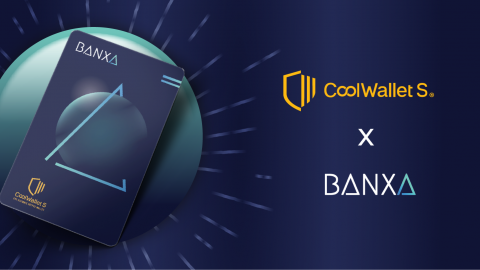Twitter and Square founder Jack Dorsey, a devoted Bitcoin maximalist and TBD this week announced plans for Web5, a decentralized internet protocol built on Bitcoin‘s blockchain.
Set to compete with the much-hyped Web3, a decentralized web currently attracting billions in funding and development, Dorsey’s plans caused quite a flutter in crypto this week, despite being drowned out by BTC’s dramatic drop to under $18,000 on the weekend.
Dorsey’s dismissive views on altcoins and Web3 are well-known after he previously called the latter overhyped and essentially hijacked and owned by rich venture capital (VC) funds like A16Z. Now, his latest brainchild shows that he’s doubling down on his promises to create a new Internet free of centralized intermediaries.
The Web5 presentation can be viewed here in full.
In short, while both Web3 and Web5 share a similar decentralized vision for the internet, Dorsey believes that Web3 is using the wrong toolbox to achieve this and that Web5 and Bitcoin are the answer.
If you’re wondering what happened to Web4, well the answer is simple: Web 5 aims to take the best from Web 2 and Web3. And 2 and 3 make 5 🙂
What is Web5?
Web5 is a decentralized web platform built on the Bitcoin network that helps developers to leverage 3 pillars, Decentralized Identifiers, Verifiable Credentials, and Decentralized Web Nodes to write decentralized web apps, thereby returning ownership and control over identity and data to individuals.
What problem is Web5 aiming to solve?
According to the presentation and website, the present Web2 model doesn’t allow users to own their data or identity. They are given accounts by companies and their data is held captive in app silos. Moreover, Dorsey feels that Web3 has been hijacked by VC funds and that it is not decentralized enough, thereby creating a single point of failure. He quotes Ethereum and Solana, both of whom have had network problems when they get congested.
“The web democratized the exchange of information, but it’s missing a key layer: identity…We struggle to secure personal data with hundreds of accounts and passwords we can’t remember. On the web today, identity and personal data have become the property of third parties”.
To create a new class of decentralized apps and protocols (e.g. tbDEX) that put individuals at the center, users must be empowered with self-owned identity and restore control over their data.
How does Web5 help users control their data and identities?
Web5 will use Bitcoin’s network and new technologies such as decentralized identifiers, a decentralized web node, a self-sovereign identity service, and a self-sovereign identity software development kit. Here’s a quick look at some key concepts.
1. Decentralized Identifiers (DIDS)
Decentralized Identifiers (DIDS) will be owned and generated by users, and be censorship-resistant and discoverable, enabling users to own their digital identity while creating an enhanced Dapp user experience.
2. Decentralized Web Nodes (DWNS)
DWNs are personal datastores that hold public and encrypted data, set to create “an emerging standard for data storage and message relay that enables entities to send & store encrypted or public messages and data”.
3. Decentralized Web Apps (DWAS)
DWAS are web apps enhanced with decentralized identity and data storage capabilities.
4. Progressive Web Apps (PWA)
PWA stands for Progressive Web App, a standard for installable web apps that is implemented in all major browsers today
What are the big benefits of Web5?
In short, Web 5 will bring true decentralization- with the help of the king of decentralized chains, Bitcoin. Web 5, just like Web 3 aims to solve this by creating an extra decentralized web that puts you in control of your data and identity.”
However, Dorsey claims that Web 5 will be more decentralized than Web3, which he feels still has the same “single-point-of-failure” risks as other centralized systems.
Since Bitcoin is the most decentralized network (although seriously outdated in terms of speed and functionality when compared with layer-1 networks), he feels it’s the best layer for building a truly decentralized web.
Owning your user data
Much has been written about Web 2’s reliance on centralized tech giants, how these companies (and hundreds of other companies) stockpile users’ private data, and how they use it for nefarious purposes.
Despite strong data privacy laws like the EU’s GDPR act, so many companies have access to your data that it’s not possible to monitor all parties and therefore costly data breaches also happen all the time. Yes, even in crypto, as we saw with Ledger, RobinHood, Hubspot, and BTC Markets in recent years, to name a few.
Web5 users will be able to move decentralized identities like social avatars and accounts across social media platforms since they own their own data. They will also be able to monetize their user data, by sharing it with 3rd parties if they wish.
Example:
Bob is a music lover and hates having his personal data locked to a single vendor. It forces him to regurgitate his playlists and songs over and over again across different music apps. Thankfully there’s a way out of this maze of vendor-locked silos: Bob can keep this data in his decentralized web node. This way Bob is able to grant any music app access to his settings and preferences, enabling him to take his personalized music experience wherever he chooses.
Controlling your identity
While Web 3 has identity and storage protocols, in Web5 these elements form part of the actual foundation, ensuring that developers have access to SDKs that they can use to create digital identities from the outset. This translates to a smoother user experience and more decentralization.
Example:
Alice holds a digital wallet that securely manages her identity, data, and authorizations for external apps and connections. Alice uses her wallet to sign in to a new decentralized social media app. Because Alice has connected to the app with her decentralized identity, she does not need to create a profile, and all the connections, relationships, and posts she creates through the app are stored with her, in her decentralized web node. Now Alice can switch apps whenever she wants, taking her social persona with her.
Conclusion
The Web5 paper is quite complicated and technical, as one would expect for what is essentially the architecture for the future of the internet. Whether it becomes a reality and Bitcoin’s notoriously outdated network can handle it remains to be seen.
However, Dorsey has proven himself as a true web visionary since he founded Twitter, and his resignation from Twitter last year caused many to wonder what his real motives and plans were. Web5 might just represent the very beginnings of his vision for truly free and decentralized internet, in line with World Wide Web creator Tim Berners-Lee’s original vision. Dorsey certainly believes so. And as history has shown, he tends to deliver on his big ideas, so don’t discount him and Web5 just yet.



